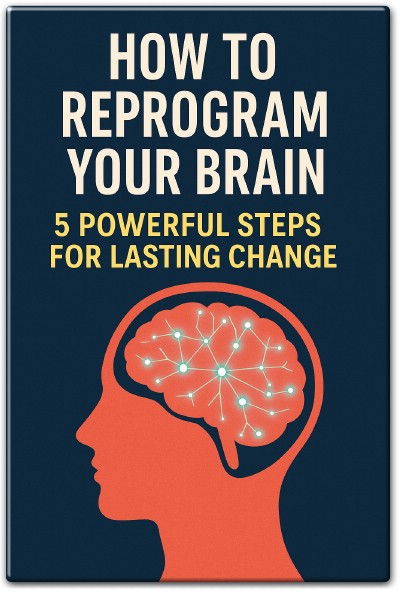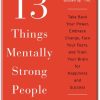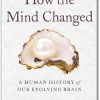
Book Summary Stop Overthinking 23 Techniques to Relieve Stress Stop Negative Spirals Declutter Your Mind and Focus on the Present by Nick Trenton provides practical strategies to help individuals manage and overcome the habit of overthinking. The book delves into the root causes of overthinking and offers 23 scientifically-backed techniques aimed at relieving stress, breaking negative thought patterns, decluttering the mind, and promoting mental well-being.
Book Summary Contents
- 1 Stop Overthinking: 23 Techniques to Relieve Stress Stop Negative Spirals Declutter Your Mind and Focus on the Present by Nick Trenton Book Details
- 2 Stop Overthinking: 23 Techniques to Relieve Stress Stop Negative Spirals Declutter Your Mind and Focus on the Present by Nick Trenton Book Statistics
- 3 Stop Overthinking: 23 Techniques to Relieve Stress Stop Negative Spirals Declutter Your Mind and Focus on the Present by Nick Trenton Quotes
- 4 Stop Overthinking: 23 Techniques to Relieve Stress Stop Negative Spirals Declutter Your Mind and Focus on the Present by Nick Trenton Table Of Contents
- 5 Book Summary Stop Overthinking
- 6 About the Author: Nick Trenton
- 7 Get Your Copy Of The Book: Stop Overthinking: 23 Techniques to Relieve Stress Stop Negative Spirals Declutter Your Mind and Focus on the Present by Nick Trenton
Stop Overthinking: 23 Techniques to Relieve Stress Stop Negative Spirals Declutter Your Mind and Focus on the Present by Nick Trenton Book Details
| Publisher | Independently published (March 1, 2021) |
|---|---|
| Language | English |
| Paperback | 200 pages |
| ISBN-10 | B08XLLF3PG |
| ISBN-13 | 979-8715048394 |
Stop Overthinking: 23 Techniques to Relieve Stress Stop Negative Spirals Declutter Your Mind and Focus on the Present by Nick Trenton Book Statistics
- Release Date: March 1, 2021
- Author: Nick Trenton
- Overall Ratings:
- Amazon: 4.5 out of 5 stars (based on 11,628 ratings)
- Goodreads: 3.8 out of 5 stars (based on 5,649 ratings)
- Series: Book 1 of 20 in The Path to Calm series
- Genres:
- Self-Help
- Nonfiction
- Psychology
- Mental Health
- Personal Development
- Health
- Business
- Audiobook
- Productivity
- Education
- Accolades:
- #1 Best Seller in Emotional Mental Health
Summary of Key Stats:
- Average Rating:
- Amazon: 4.5/5 (11,628 ratings)
- Goodreads: 3.8/5 (5,649 ratings)
- Top Ranking:
- #1 Best Seller in Emotional Mental Health
- Series:
- Part of The Path to Calm series, which includes 20 books.
Stop Overthinking: 23 Techniques to Relieve Stress Stop Negative Spirals Declutter Your Mind and Focus on the Present by Nick Trenton Quotes
Remember that forgiveness is something you do for yourself, not the other person. When you forgive, you are releasing yourself from the stress and energy of resenting and blaming the other person.
In other words, though it might not feel like it in the moment, a big cause of anxiety can come down to intrinsic factors within you as an individual.
Stress and anxiety are not the same thing. Psychologist Dr. Sarah Edelman explains that stress is something in the environment, an external pressure on us, whereas anxiety is our internal experience of this pressure.
People who are not subject to anxious overthinking have mastered a particular attitude to life that’s characterized by flexibility, focus, resilience, and beneficial action. Put your awareness
the overthinker gets trapped in the cycle of analyzing, rejecting, and reconsidering different possibilities
our brains are organs and part of our physical bodies.
the brain is ultimately spending as much time stewing over what is not happening
When you forgive, you are releasing yourself from the stress and energy of resenting and blaming the other person.
When no task dominates, the brain ends up mulling over its place in the world and processes and reprocesses social information and memories in the interests of increasing survival.
Overthinkers are typically intelligent, but sometimes that just means they’re really good at hiding obvious things from themselves!
So, what’s really happening is that worries are controlling you rather than you controlling them. A stressful thought comes along and cracks the whip, and you instantly obey. The mistake we make is to think that if a negative thought comes along, there is no other option but to focus on it.
Stop Overthinking: 23 Techniques to Relieve Stress Stop Negative Spirals Declutter Your Mind and Focus on the Present by Nick Trenton Table Of Contents
- Overthinking Isn’t About Overthinking
- Causes for Mental Clutter and Agony
- The De-Stress Formula and Then Some
- The 4 A’s of Stress Management
- Stress Diaries and Journals
- The 5-4-3-2-1 Grounding Technique
- Narrative Therapy and Externalization
- Manage Your Time and Inputs
- Stress Management 101
- Allen’s Input Processing Technique
- Eisenhower’s Method
- Setting SMART Goals
- Kanban Method
- Time Blocking
- How to Find Instant Zen
- Autogenic Training
- Guided Imagery and Visualization
- Progressive Muscle Relaxation
- Rewire Your Thought Patterns
- Unraveling Cognitive Distortions
- Using CBT to Clean Up Self-Talk
- Self-Scripting: Positive Reinforcement
- Newfound Attitudes and Emotional Regulation
- Focus on What You Can Control
- Opposite Action for Emotional Regulation
- Summary Guide
Book Summary Stop Overthinking
About the Author: Nick Trenton

nicktrenton.com
Nick Trenton is an author and mental health advocate who specializes in helping people break free from the cycle of overthinking. His writing draws on psychological research and practical techniques to assist readers in overcoming stress and anxiety.
Trenton’s approachable style makes complex psychological concepts accessible, allowing readers to apply them in their everyday lives. Through his work, he aims to equip individuals with the tools to regain control of their thoughts and lead more fulfilling, present-focused lives.
Get Your Copy Of The Book: Stop Overthinking: 23 Techniques to Relieve Stress Stop Negative Spirals Declutter Your Mind and Focus on the Present by Nick Trenton
![]()



































